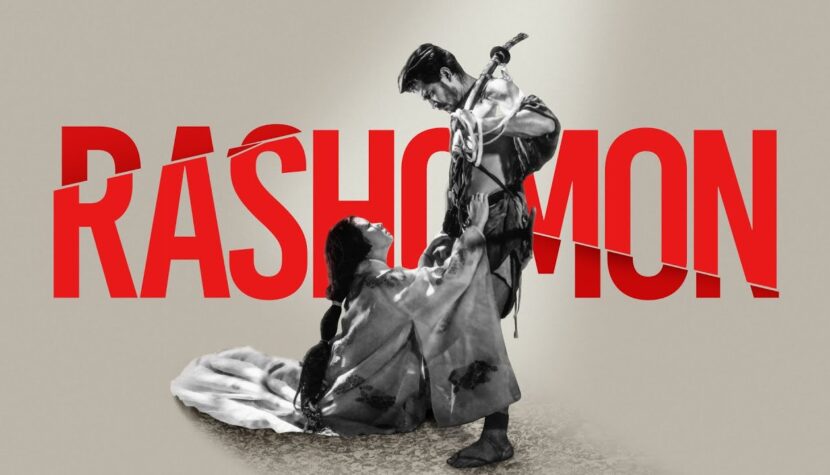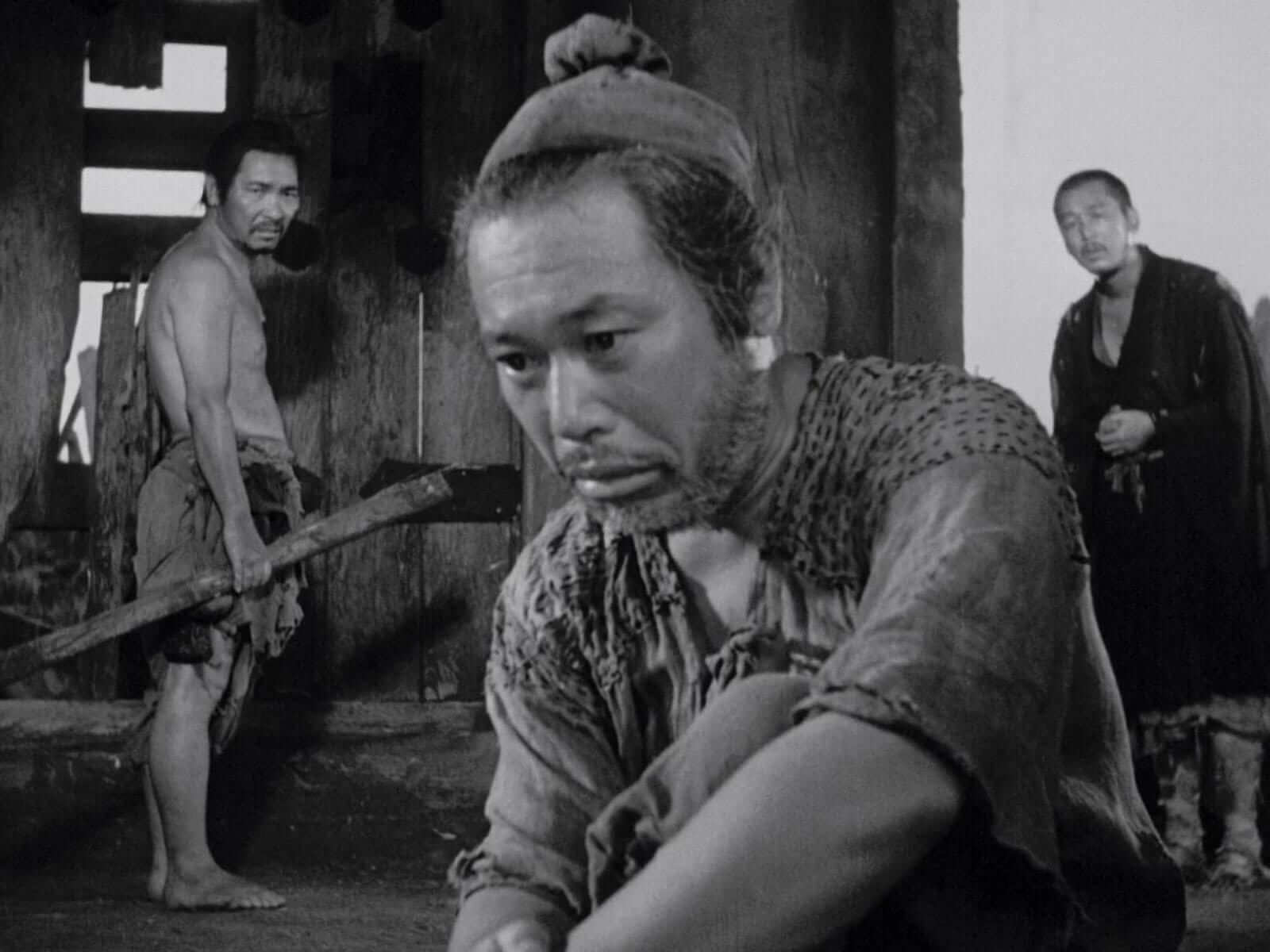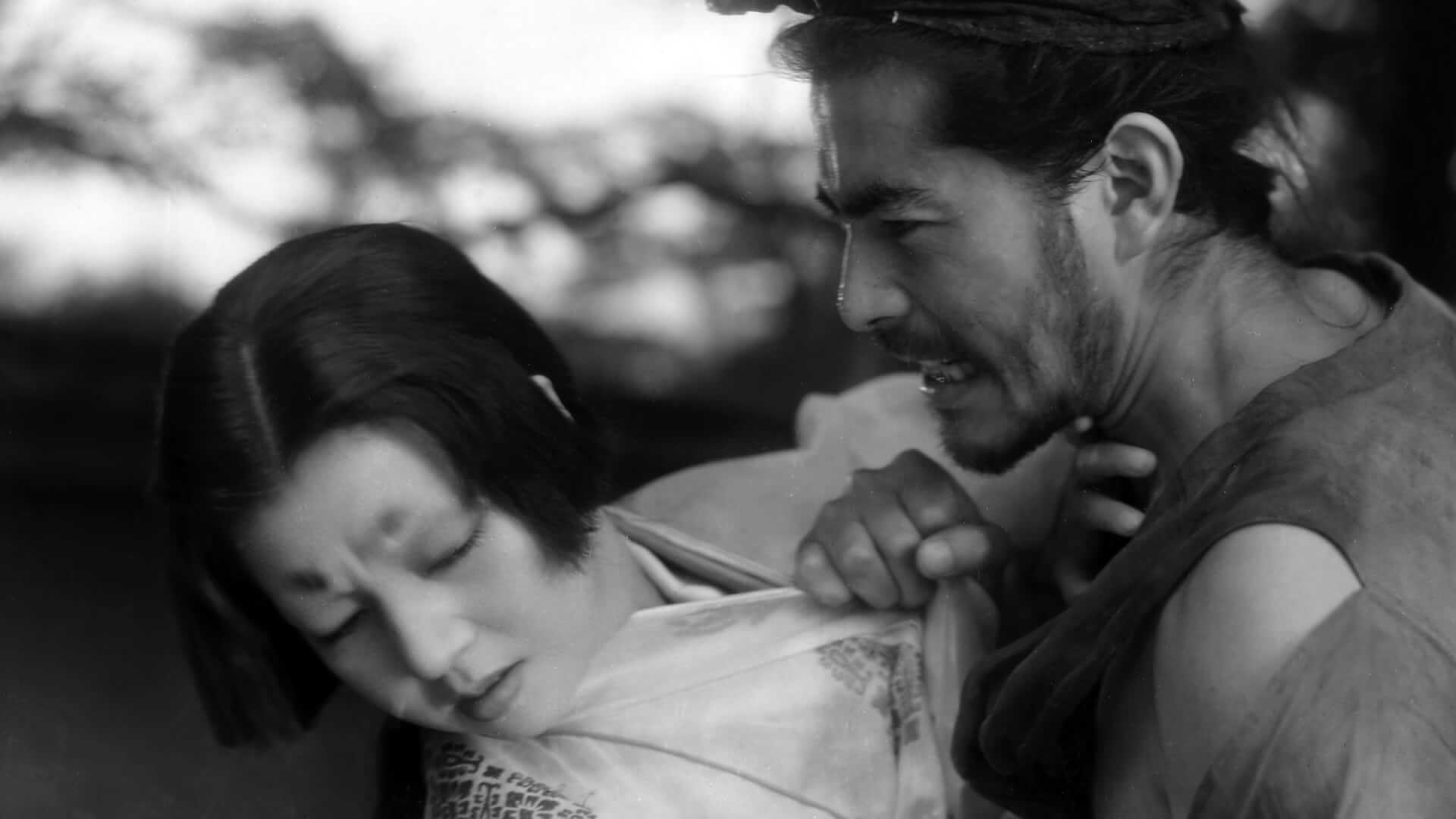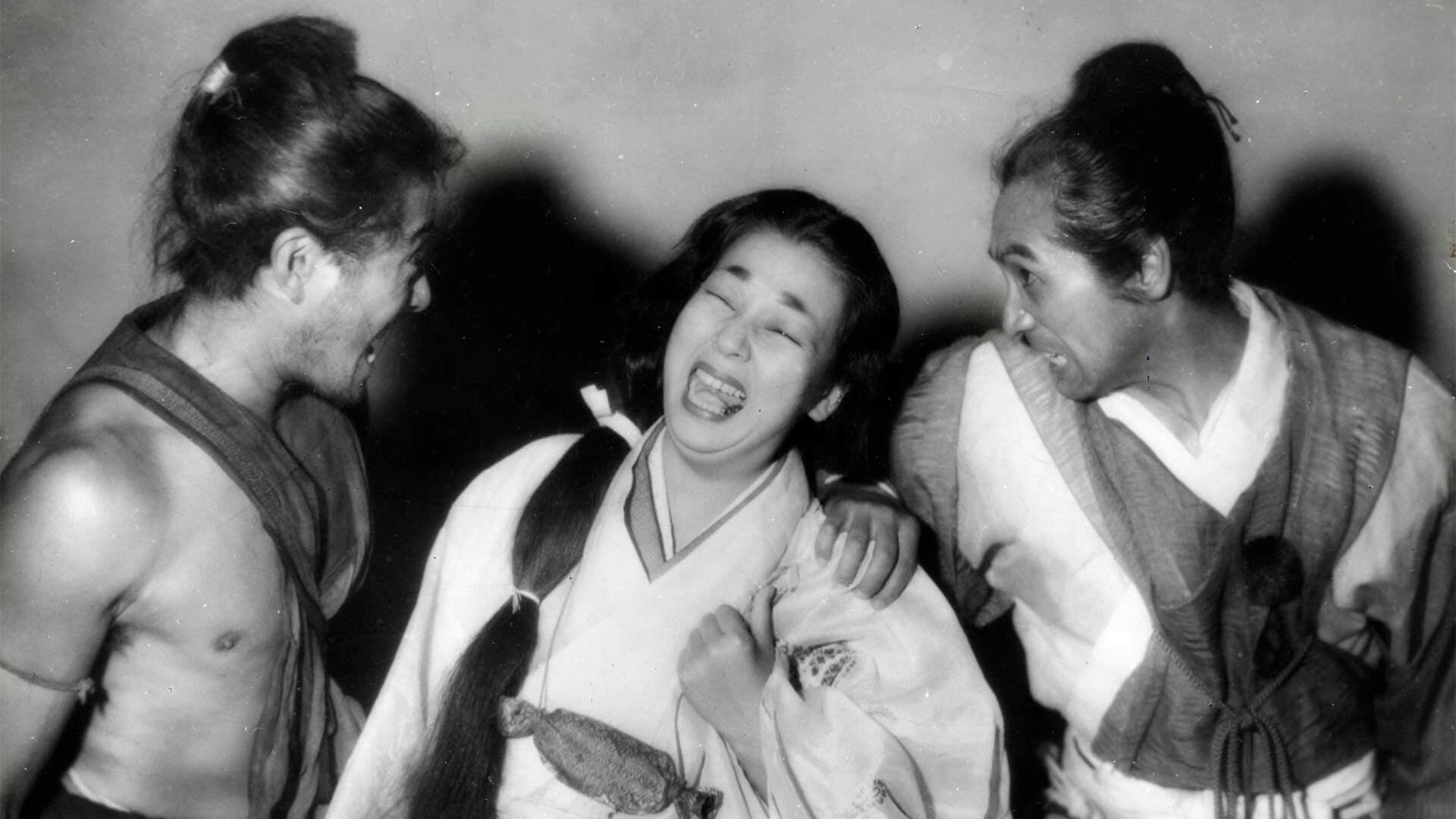RASHOMON. One Of The Most Influential Films Of All Time

Man hands on misery to man.
It deepens like a coastal shelf.
Get out as early as you can,
And don’t have any kids yourself.
– Philip Larkin, This Be The Verse
Through the curtain of torrential rain, the outlines of an abandoned, half-ruined structure emerge – part palace, part gate guarding a city drowning in streams of water, Rashomon. Among broken boards, on the bare floor, sit two men. After a moment, evading the rain and jumping over puddles, a third joins them. A monk, a woodcutter, and a petty thief… This small group, neither particularly wise nor excessively righteous, will, not entirely of their own will, delve into the mystery of human baseness and repeatedly cross the thin line separating good from evil and truth from falsehood.

Rashomon is derived from the stories of Ryunosuke Akutagawa. One of the greatest twentieth-century writers from the Land of the Rising Sun committed suicide at the age of 35. He left behind over 100 stories, combining a fascination with traditional Japanese ghost stories with the formal and narrative precision characteristic of the works of Edgar Allan Poe, whose attentive reader he was during his student years. Akira Kurosawa selected two texts from the Japanese writer’s legacy and, together with Shinobu Hashimoto, created one of the best screenplays in cinema history.

In the literary original, Rashomon is a gate leading to Kyoto, decimated by various plagues, and it is in its shadow that the drama of greed and lack of compassion unfolds – a servant robs an old woman wanting to weave a wig from the hair pulled from a deceased old woman, who herself had committed many basenesses in the vain hope of saving her life. Kurosawa and Hashimoto retained only the symbolic name, drawing the core of the story from another Akutagawa work, in which different versions of the same events – the rape of a woman and the murder of her husband – are confronted. The monk and the woodcutter, testifying in court as witnesses, recount to the rogue sheltering with them from the rain three stories: one heard from the criminal who is the main suspect in the case, the raped wife, and the man speaking from beyond the grave through a medium. However, there is yet another version… Or perhaps there are as many as there are viewers of the film?

The ambiguity of the story is emphasized by extraordinary cinematography and a series of brilliant staging techniques. The scene of the woodcutter finding the corpse, for example, makes a huge impression thanks to the incredibly ingenious camera positioning. We see only the dead man’s hands and the terrified face of the simple man, as if pointed at by the stiffened fingers. The lens here gives the impression of the eyes of the deceased raising his hands in silent protest. During the interrogation scenes, the actors speak directly to the camera, as if the viewers themselves were the tribunal tasked with hearing the testimonies.

It seems that nothing is obvious here – except for the pervasive baseness. Small lies, disappointed hopes, hidden grievances, sometimes a momentary, irrational impulse – all these make the web of lies and distortions too dense over time to reach the truth. Even the dead lie, and the victims turn out to be the executioners. Akutagawa wrote in his suicide note: We, human beings, being animals in human form, feel an animal fear of death. What is called vitality is nothing but animal strength. The animal driven into the trap of life quickly loses strength, sometimes, however, its very unbridled vitality becomes the cause of its misfortunes. This happened in the case of the common bandit Tajomaru, who suddenly desired a woman embodying beauty and bringing the promise of fulfilling some unspoken, shameful dream.

Is goodness possible in this rain-soaked, mud-smeared world? Is new life possible on the ruins of the Rashomon gate, free from baseness, pure? After all, “sho” means life… According to some interpretations, the only character in this story who shows a desire to start everything anew and overcome his own shortcomings represents the director’s alter ego. However, in the final scene, holding a small child in his arms, he smiles at least ambiguously – either with relief or maliciously…

